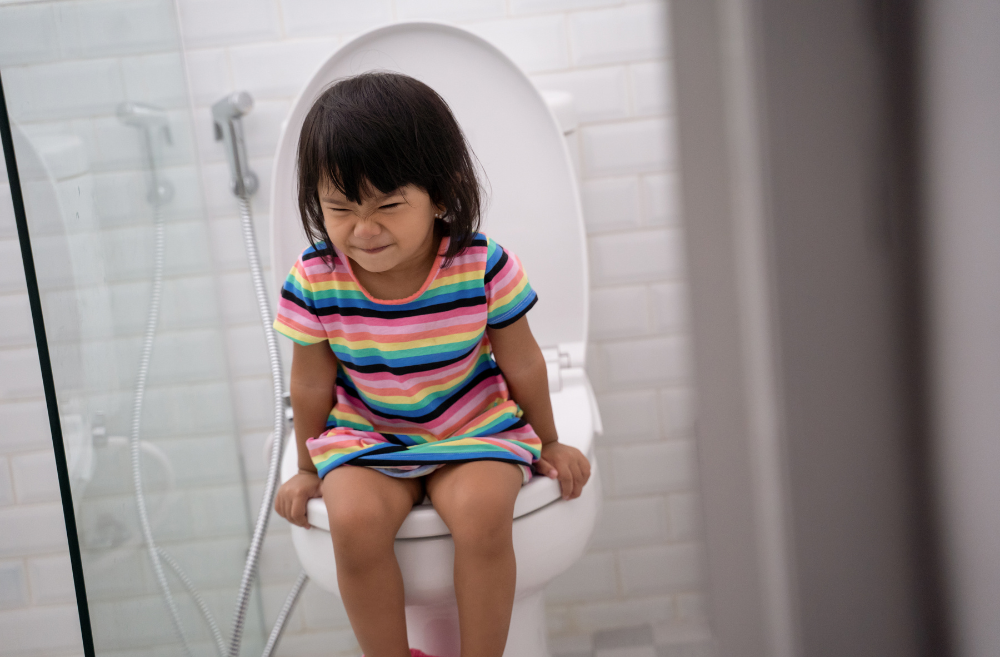By: Red Door Pediatric Therapy Staff
Constipation is a common issue that affects many toddlers and children, often causing discomfort and distress. However, identifying constipation in young ones can be challenging for parents as the symptoms may not always be apparent. This article aims to shed light on the signs of constipation in toddlers and children aged 4-7, emphasizing the leading symptom of bowel leakage and its connection to constipation. We will also explore how constipation can contribute to bedwetting and accidents and discuss several ways parents can help alleviate constipation in their children. Additionally, we will highlight the role of Physical and Occupational Therapists as valuable resources for advice and services to address constipation-related issues in children.
Recognizing the Signs
One of the most common signs of constipation in toddlers and children is bowel leakage. Many parents may not immediately recognize this as a symptom of constipation, assuming it indicates a different issue. However, bowel leakage or smearing in the underwear often occurs when stool backs up in the intestines, causing softer, liquid stool to leak around the hard, impacted stool. It is crucial for parents to be aware of this connection and consider constipation as a potential cause.
The Link between Constipation and Bedwetting/Accidents
Constipation can contribute to bedwetting and accidents in children, particularly when daytime accidents occur alongside bedwetting. The presence of constipation may interfere with the child’s ability to sense and control their bowel movements fully. As a result, the child may experience unexpected accidents, both during the day and at night. Addressing constipation can significantly improve these issues.
Ways to Help Alleviate Constipation:
- Hydration: Ensure your child drinks an adequate amount of water throughout the day. Staying hydrated helps soften the stool, making it easier to pass.
- Regular Toilet Routine: Establish a regular toilet routine, encouraging your child to sit on the toilet for a few minutes at the same time each day. This routine helps develop healthy bowel habits.
- Physical Activity: Encourage your child to engage in regular physical activity. Exercise stimulates bowel movements and promotes overall digestive health.
- Recognize Bathroom Cues: Teach your child to recognize and respond to their body’s cues for a bowel movement. Encourage them to use the bathroom whenever they feel the urge.
- Supportive Toilet Posture: Ensure your child is using a proper toilet posture by using a stool or special seat insert. This helps align the rectum and makes passing stool easier.
- Increase Fiber Intake: Encourage your child to consume fiber-rich foods such as fruits, vegetables, whole grains, and legumes. Fiber adds bulk to the stool and promotes regular bowel movements.

